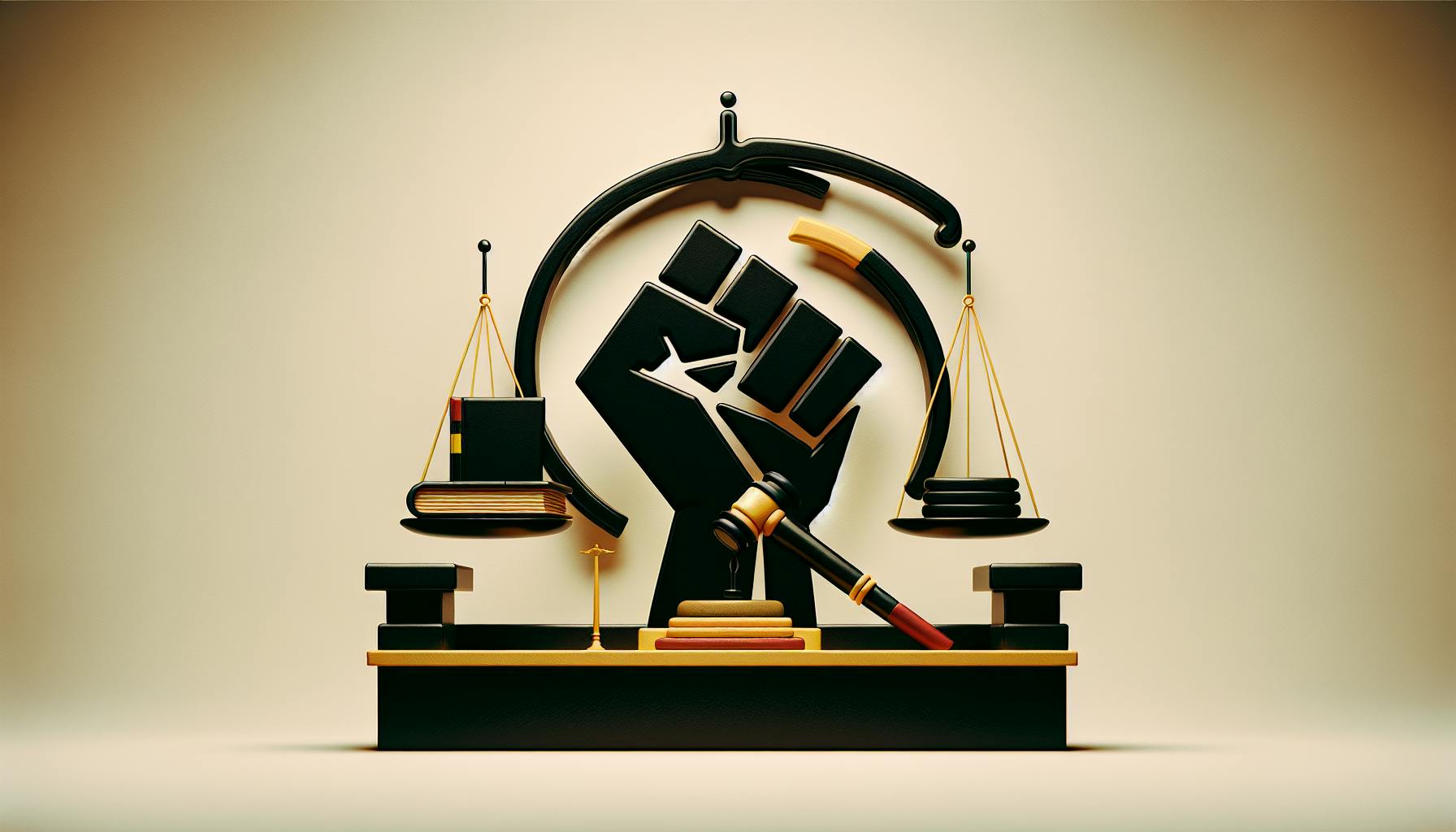No doubt many would agree that acts of terrorism on American soil shake our sense of security.
This article provides a factual examination of the Boston Marathon bombing, from the attack itself to the apprehension and trial of the perpetrators.
We will analyze the timeline, motives, and lasting impacts of this tragic event, seeking objectivity and insight rather than reactive judgment.
Terrorism on American Soil - The Boston Marathon Bombing
On April 15, 2013, two pressure cooker bombs exploded near the finish line of the Boston Marathon, killing 3 people and injuring several hundred others. This act of domestic terrorism was carried out by two radicalized brothers, Tamerlan Tsarnaev and Dzhokhar Tsarnaev.
The Tsarnaev brothers were inspired by extremist Islamic beliefs and the online sermons of al-Qaeda propagandist Anwar al-Awlaki. They used instructions found in al-Qaeda's Inspire magazine to build the pressure cooker bombs, which utilized explosive powder and shrapnel to maximize damage.
Tamerlan Tsarnaev died during a confrontation with police after the bombing. His younger brother Dzhokhar evaded capture for a day before being found hiding in a boat in Watertown, Massachusetts. He was arrested and faced 30 federal charges, including using a weapon of mass destruction resulting in death.
In 2015, Dzhokhar Tsarnaev was convicted by a federal jury on all 30 counts. He was sentenced to death for his role in the terrorist attack. His death sentence is currently under appeal, with arguments being heard by the Supreme Court of the United States in 2022.
The Boston Marathon bombing shocked the nation and brought the realities of terrorism and radicalization to American soil. It highlighted vulnerabilities in public safety and spurred reviews of intelligence gathering procedures and information sharing between agencies. The bombing will be remembered as a senseless and tragic act of violence that claimed innocent lives and forever changed those affected.
The Attack: Terror Strikes the Boston Marathon on April 15, 2013
On April 15, 2013, two pressure cooker bombs exploded near the finish line of the Boston Marathon, killing 3 people and injuring over 260 others. The attack was an act of domestic terrorism that shocked the nation.
Chronology of the Boston Marathon Bombing
At 2:49 pm on race day, the first bomb exploded on Boylston Street near the marathon finish line. Within seconds, a second bomb detonated just down the street. First responders and medical tents already stationed at the finish line rushed into help. Chaos and confusion reigned as runners and spectators fled the area. By 4 pm, a state of emergency was declared in Boston.
The Explosive Mechanism: Pressure Cooker Bombs
The twin explosions were caused by two crude but deadly pressure cooker bombs placed in backpacks on the sidewalk. The devices were constructed using common materials - pressure cookers, explosive powder, shrapnel, circuit boards, and batteries. When detonated remotely using cell phones, the resulting explosions sent metal fragments flying outward at high velocity.
Casualties and Heroes: Fatalities and Injuries
The attack killed 3 people: 8-year-old Martin Richard, 29-year-old restaurant manager Krystle Campbell, and 23-year-old Boston University graduate student Lingzi Lu. Over 260 were injured, many losing limbs from the shrapnel. First responders and volunteers rushed to assist victims, applying tourniquets and transporting the injured for treatment. Their swift actions saved many lives.
Immediate Aftermath: Response to Domestic Terrorism
In the aftermath, a massive manhunt was launched to find the perpetrators. Residents were asked to shelter in place as authorities searched the area. Public transit was halted, and events were cancelled across the region. Acts of heroism and community support provided comfort, but the city was shaken by this act of terrorism on American soil. Investigators pledged to bring those responsible to justice.
The Suspects: The Tsarnaev Brothers
Profile of Tamerlan Tsarnaev: From Amateur Boxer to Radicalized Terrorist
Tamerlan Tsarnaev was the older of the two brothers. He was born in 1986 in Kyrgyzstan. His family immigrated to the United States when he was a teenager, settling in Cambridge, Massachusetts.
Tamerlan was once a promising amateur boxer who won the New England Golden Gloves competition in 2009 and 2010. However, his boxing career stalled as he struggled to gain U.S. citizenship.
Around 2009, Tamerlan became increasingly focused on his Muslim faith and adopted more extremist views. He created a YouTube channel where he posted jihadist videos. The FBI was alerted but found no solid evidence of terrorist connections at the time.
Dzhokhar Tsarnaev: The Younger Brother's Transformation
Dzhokhar Tsarnaev was born in 1993 after his family immigrated to the U.S. Known by classmates as friendly and kind, he became a naturalized U.S. citizen in 2012 while studying at the University of Massachusetts Dartmouth.
Under the increasing influence of his older brother Tamerlan, Dzhokhar also began immersing himself in radical Islamic beliefs. He largely abandoned his studies and other pursuits.
Dzhokhar likely assisted with building the pressure cooker bombs ultimately used in the Boston Marathon attack. His full willing participation remains unclear.
Pathway to Extremism: Self-Radicalization and Influences
The Tsarnaev brothers appear to have self-radicalized through online exposure to militant Islamic beliefs, rather than through direct al-Qaeda recruitment. Materials promoting global jihad resonated with Tamerlan in particular.
Inspiration may have also come from a 2011 special edition of al-Qaeda's Inspire magazine focused on homegrown attacks. Investigators believe the Tsarnaevs used this to construct the dual pressure cooker bombs detonated at the 2013 Boston Marathon finish line.
sbb-itb-ba8dd7e
sbb-itb-ba8dd7e
sbb-itb-ba8dd7e
sbb-itb-ba8dd7e
The Manhunt: A City on Edge
The FBI's Role in Unraveling the Bombing
The Federal Bureau of Investigation (FBI) led the initial investigation into the Boston Marathon bombings. Evidence collected from the crime scenes, including fragments of the pressure cooker bombs, was analyzed by the FBI Laboratory in Quantico, Virginia. FBI agents also began gathering surveillance camera footage from the marathon route and identifying potential witnesses.
Within days, the FBI determined that the bombs were improvised explosive devices made using pressure cookers packed with nails, ball bearings and black powder. They were able to isolate images of two suspects, later identified as brothers Tamerlan and Dzhokhar Tsarnaev.
Public Appeal: Release of Suspect Photos by the FBI
On April 18th, the FBI made the strategic decision to release images of the two suspects captured on surveillance cameras to the public. They urged the public to come forward with any information that could help identify and locate the suspects.
This decision to involve the public ultimately proved crucial in quickly tracking down the suspects. Once the photos were released, several people called in tips that allowed law enforcement to put names to the faces.
The MIT Shooting: A Tragic Turn
In the early hours of April 19th, the suspects shot and killed MIT police officer Sean Collier in his patrol car. The motive behind the shooting remains unclear, however it is believed they wanted to steal Collier's gun.
After the shooting, the suspects carjacked a Mercedes SUV in Cambridge. They forced the driver to withdraw $800 from an ATM before taking him hostage. The suspects told the victim they were responsible for the marathon bombing.
The Watertown Shootout: Tamerlan Tsarnaev's Last Stand
That same night, police located the stolen Mercedes in Watertown. As officers approached, the Tsarnaev brothers opened fire. In the intense shootout that followed, Tamerlan Tsarnaev sustained critical injuries when his brother Dzhokhar accidentally struck him with the stolen SUV while fleeing the scene.
Tamerlan was taken into custody and later pronounced dead at the hospital. An unprecedented manhunt was launched for Dzhokhar, who had escaped on foot. He was found hiding in a boat in a Watertown backyard the next day.
The Capture: Dzhokhar Tsarnaev Apprehended
Discovery in Watertown: The Final Hideout
On the evening of April 19th, 2013, Dzhokhar Tsarnaev was discovered hiding inside a boat in a Watertown backyard following an extensive manhunt. The boat's owner, David Henneberry, noticed that the protective tarp covering his boat had become loosened. When he went to investigate, he saw a trace of blood and a body inside the boat and quickly called 911. What followed was a tense standoff between Tsarnaev and the police.
Law enforcement surrounded the area and attempted negotiations to get Tsarnaev to surrender peacefully. When he refused to comply, flashbangs and tear gas were deployed to force him out of hiding. Finally, after the lengthy standoff, Tsarnaev emerged from the boat, weakened from his injuries sustained during previous shootouts. He was immediately taken into custody, ending the days-long search for the remaining marathon bombing suspect.
Standoff and Apprehension: Ending the Manhunt
The capture of Dzhokhar Tsarnaev concluded the extensive manhunt for the perpetrators of the Boston Marathon bombings. For nearly 24 hours, Tsarnaev evaded capture following a violent confrontation with police in Watertown the night prior. His older brother and fellow suspect, Tamerlan Tsarnaev, was killed in that shootout.
The younger Tsarnaev brother managed to escape the firefight on foot, triggering a massive search effort by state and federal law enforcement. The shelter of David Henneberry's boat provided Dzhokhar temporary refuge as police combed the Watertown area. However, once discovered there, Tsarnaev no longer had anywhere else to hide.
Despite resistance, Tsarnaev eventually surrendered to the overwhelming police presence surrounding him. He exited the boat, dropped to his knees, and was taken into custody. With the remaining bombing suspect finally apprehended after five days of uncertainty, the manhunt had reached its conclusion. Tsarnaev would face trial for his role in the bombings that shook the nation.
The Trial: United States v. Tsarnaev
Facing Justice: Charges and the Federal Trial
Dzhokhar Tsarnaev faced 30 federal charges in his trial, including using a weapon of mass destruction resulting in death. He and his brother Tamerlan were accused of detonating two pressure cooker bombs at the Boston Marathon finish line on April 15, 2013, killing 3 people and injuring over 260 others.
The trial began in January 2015 in the United States District Court for the District of Massachusetts, with Tsarnaev pleading not guilty to all 30 charges. Key evidence presented by federal prosecutors included surveillance footage showing Tsarnaev leaving the backpack containing the second bomb, as well as incriminating texts and writings seized from his computer indicating he had been radicalized.
The Verdict: Dzhokhar Tsarnaev Sentenced to Death
After a 12-week trial and 15 hours of deliberations, on May 15, 2015, the jury found Dzhokhar Tsarnaev guilty of all 30 charges. In the sentencing phase, the jury unanimously voted to impose the death penalty. Tsarnaev showed little emotion as the verdict was read, sentenced to death by lethal injection.
Legal Challenges: Appeals and the United States Court of Appeals for the First Circuit
In July 2020, a three-judge panel from the United States Court of Appeals for the First Circuit upheld Tsarnaev's convictions and death sentence. His legal team appealed again, arguing errors were made in the trial court restricting evidence.
In March 2022, the full First Circuit bench affirmed his death sentence in a 6-3 vote. The case may next go to the Supreme Court of the United States for further review.
Supreme Court Review: The Future of Tsarnaev's Sentence
Dzhokhar Tsarnaev's legal team has indicated they may petition for the Supreme Court to review his death sentence. If the Supreme Court declines to hear the appeal, his death sentence would likely be carried out. If the Court accepts the case, Tsarnaev's attorneys may argue issues related to the jury selection process and restrictions on mitigating evidence.
Ultimately, the Supreme Court has discretion on whether to intervene regarding Tsarnaev's sentence. Their decision could determine if he faces execution or continues appealing through the courts.
Conclusion: Reflections on the Boston Marathon Bombing and Its Aftermath
The Boston Marathon bombing was a shocking act of violence that deeply impacted the Boston community. The attack killed 3 people and injured hundreds more. It shook people's sense of security and revealed gaps in preparedness for responding to acts of terrorism.
The legal process following the bombing highlighted complex questions around terrorism, immigration, and the death penalty. Dzhokhar Tsarnaev was sentenced to death for his role in the attack. His brother Tamerlan was killed in the aftermath. Their motives traced back to radicalization and inspiration from overseas terror groups. This raised difficult questions about monitoring and preventing radicalization within immigrant communities.
In the aftermath, Bostonians showed tremendous resilience and unity. The city has enhanced safety measures for large events while preserving its open, welcoming spirit. Nationally, the bombing fueled efforts to improve coordination between law enforcement agencies to detect threats before attacks occur.
The Boston Marathon bombing serves as a reminder that safety can never be taken for granted. Communities and law enforcement must continue working to balance security, justice, and openness in the ongoing fight against terror. The city of Boston continues honoring the victims while looking ahead to a peaceful future.


